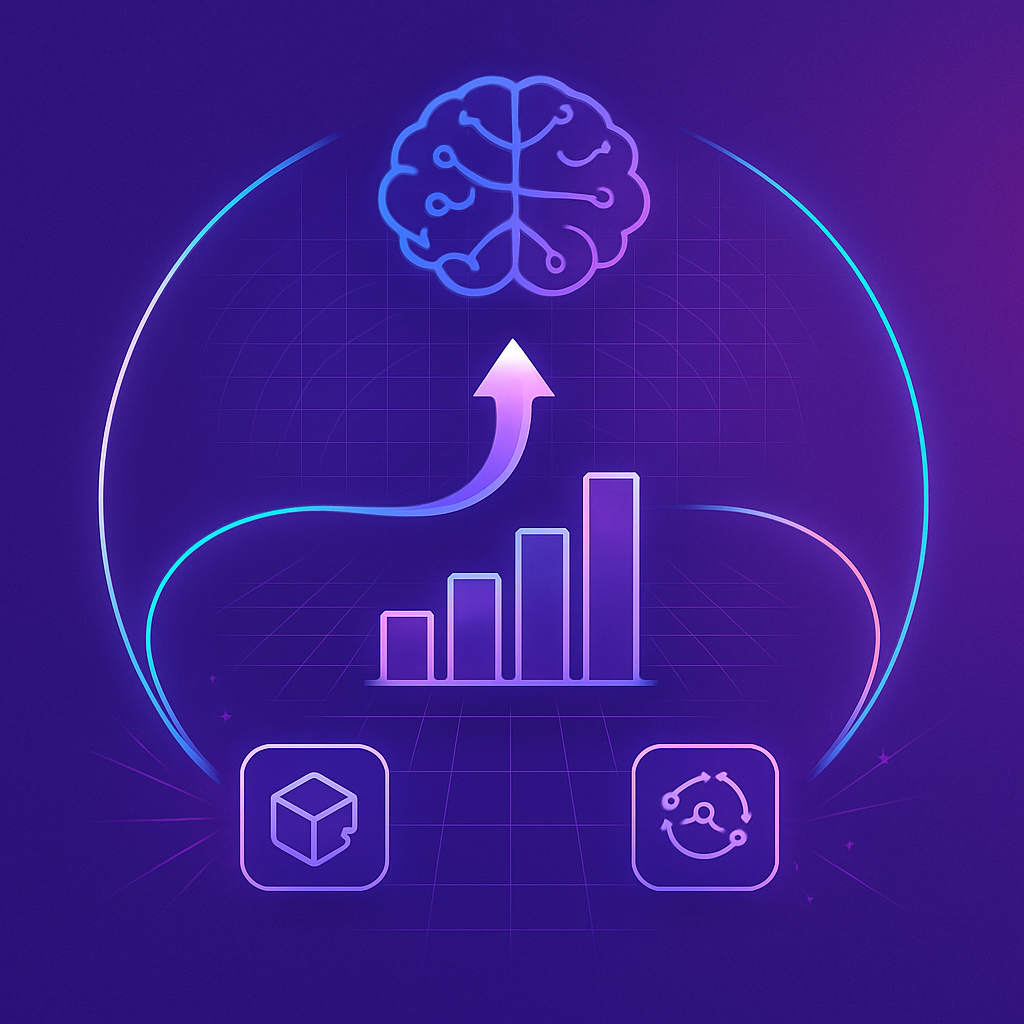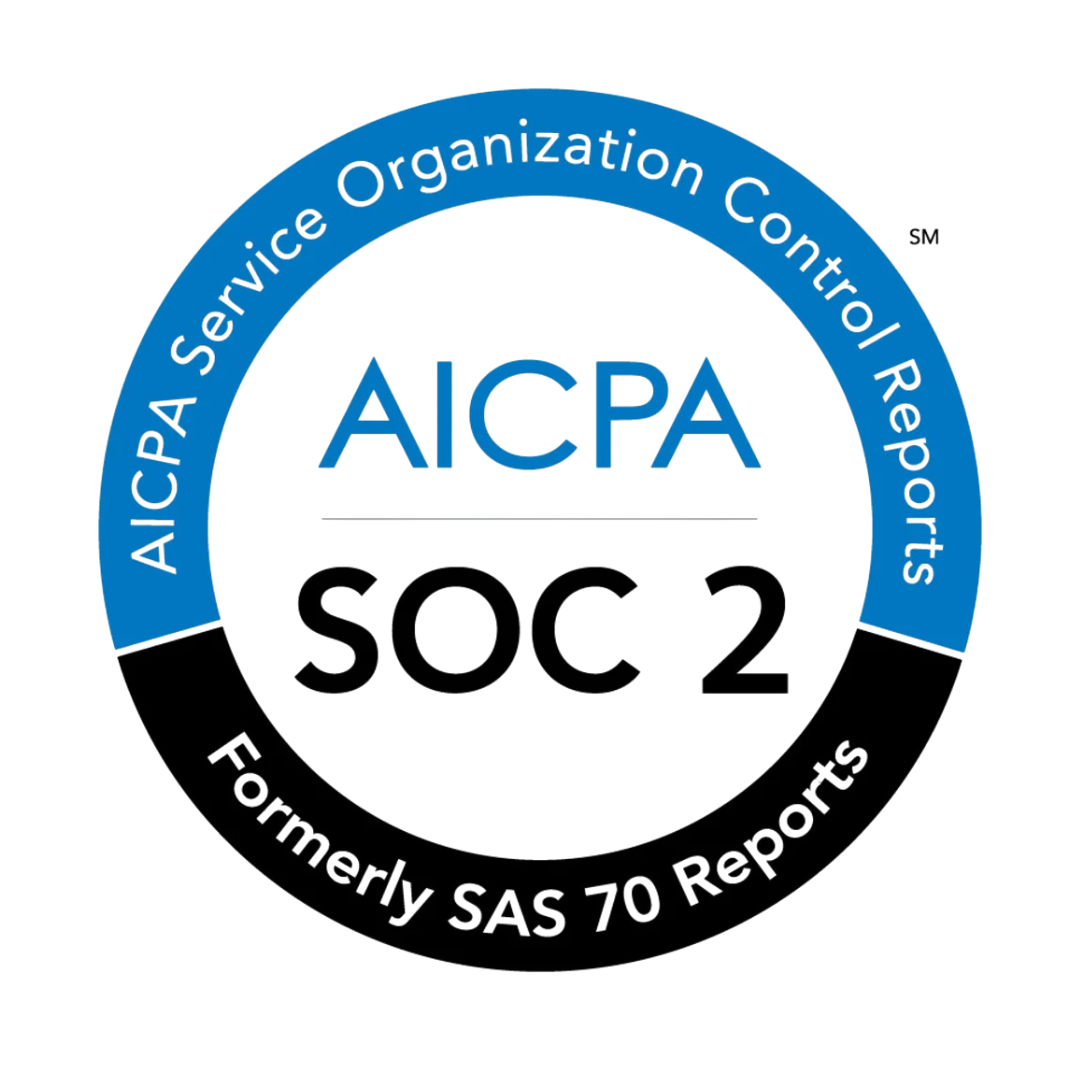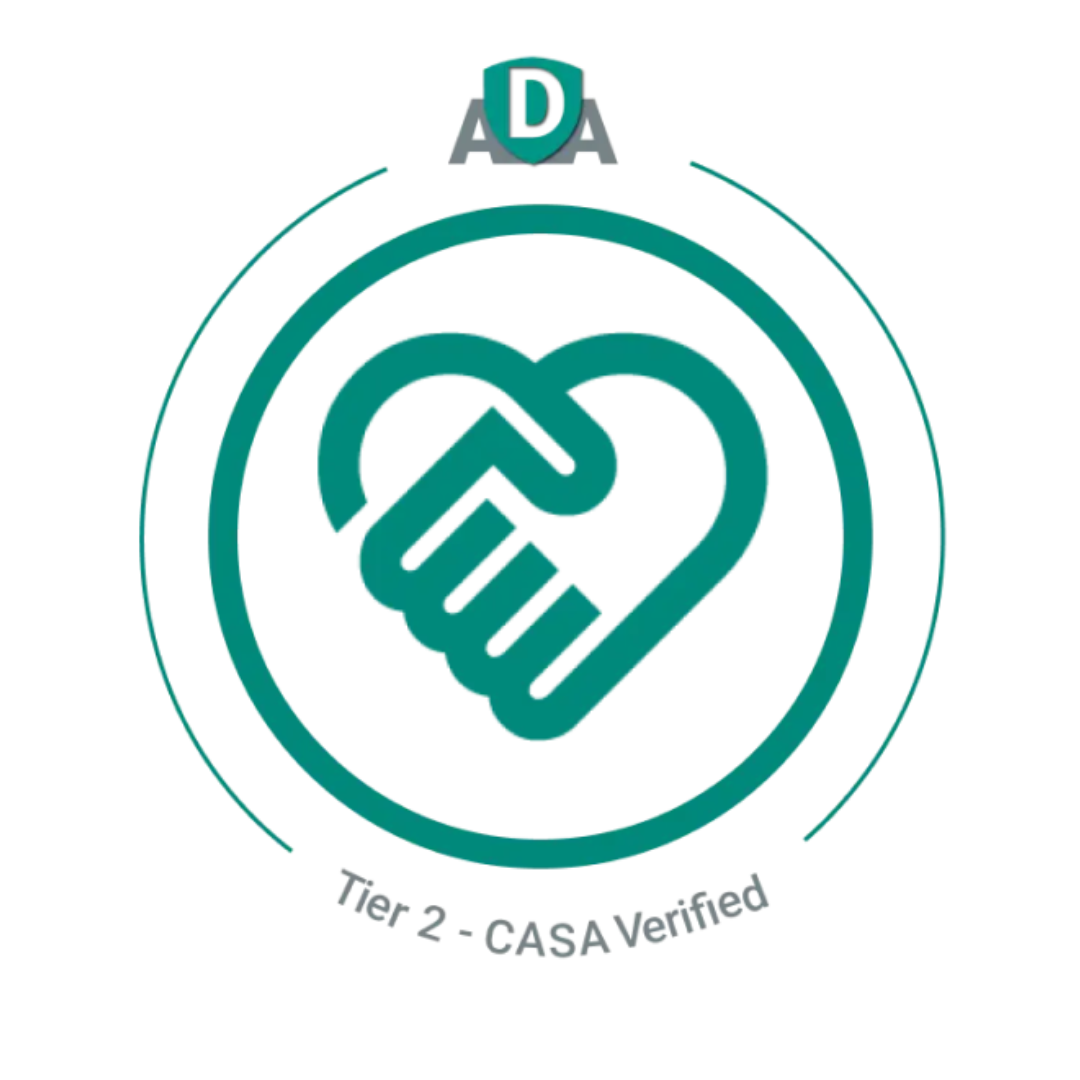The generative AI funding landscape has evolved dramatically in 2025, with Series A rounds becoming increasingly competitive and selective. While the market continues to show strong investor interest in AI companies, founders need a data-driven approach to identify which funds are actively writing checks and what traction milestones they demand. (Metal Intelligence)
This comprehensive guide analyzes the most significant Series A deals in generative AI from Q1-Q2 2025, identifies the key investors leading these rounds, and provides a systematic approach to targeting the right funds for your AI startup.
The 2025 Generative AI Series A Landscape
Major Deals Setting the Pace
The first half of 2025 has seen several landmark Series A rounds that demonstrate continued investor appetite for generative AI companies. Genesis AI's massive $105 million seed round, co-led by Eclipse and Khosla Ventures, signals strong institutional interest in AI applications for robotics. (TechCrunch) While technically a seed round, the size and investor profile mirror what we typically see in Series A deals.
The company, founded by Zhou Xian (PhD in robotics from Carnegie Mellon) and Théophile Gervet (former Mistral research scientist), aims to build a general-purpose model enabling robots to automate repetitive tasks from lab work to housekeeping. (TechCrunch) This deal exemplifies the type of ambitious, well-credentialed teams that top-tier VCs are backing in the generative AI space.
Meanwhile, established players like Stability AI continue to innovate with new model releases like Stable Diffusion 3.5 for professional-grade image generation, demonstrating the ongoing evolution and commercial viability of generative AI applications. (Stability AI)
Market Context and Investor Behavior
The U.S. venture capital industry experienced a record-breaking boom in 2021, followed by a reset during 2022-2023, and is now finding a new equilibrium. (Medium) This normalization has created a more selective environment where investors are focusing on companies with clear traction and differentiated technology.
For Series A rounds specifically, most are led by well-known institutional investors with significant investment experience. (Metal Series A Overview) The market for Series A financing has been particularly challenging since the 2022 downturn, making it crucial for founders to target the right investors with precision.
Key Investors Leading Generative AI Series A Rounds
Tier 1 Institutional Leaders
Based on recent deal activity and investment patterns, several funds have emerged as consistent leaders in generative AI Series A rounds:
Eclipse Ventures has demonstrated strong conviction in AI applications, co-leading Genesis AI's large seed round. Their focus on applied AI and robotics makes them a prime target for founders building practical AI solutions.
Khosla Ventures continues to concentrate investments in emerging technologies, with 27% of their portfolio in healthcare and significant activity in AI applications. (Metal Finding Investors) Their thesis-driven approach and willingness to lead large rounds makes them attractive for ambitious AI companies.
First Round Capital tends to invest early but specializes at the seed stage, making them "seed specialists" rather than "pre-seed tourists." (Metal Finding Investors) For companies transitioning from seed to Series A, understanding this distinction is crucial.
Identifying Active Funds
Only about 10% of all venture funds are actively deploying capital at any given time. (Metal Finding Investors) Founders need to filter for investment firms that have made at least one investment in the past 3-6 months to ensure they're targeting active deployers.
The key is focusing on investors that are "geographically relevant" based on their prior investments, rather than taking an overly restrictive approach. (Metal Finding Investors) Many European and Asian investors actively invest in US AI companies, expanding the potential pool significantly.
Building Your Target List with Metal's Dynamic Filtering
Setting Up Your Generative AI Series A Filter
Metal's platform enables founders to create highly targeted investor lists using granular filters. (Metal Investor Search) For generative AI Series A targeting, the optimal filter combination includes:
Stage Filtering: Focus on "stage specialists" rather than "stage tourists" by filtering for investors who have made at least 25% of their investments at Series A. (Metal Stage Filters) This ensures you're targeting funds that truly understand Series A dynamics and expectations.
Sector Concentration: Look for investors with both "sector familiarity" and "sector concentration" in AI/ML. (Metal Finding Investors) Familiarity means they've made multiple AI investments; concentration means a significant percentage of their portfolio is in AI, indicating a strong thesis.
Recent Activity: Filter for funds that have made investments in the last 6 months to ensure active deployment. (Metal Other Filters) This eliminates "barely active" funds that make only 1-2 investments annually.
Fund Size Alignment: Target funds with $100-500M in assets under management, as they typically write $2-10M checks suitable for Series A rounds. (Metal Finding Investors) The general rule is that investors maintain check sizes of roughly 1-2% of total fund size.
Creating Your Dynamic List
Here's how to set up a dynamic list in Metal for generative AI Series A targeting:
Sector: Artificial Intelligence/Machine Learning
Stage: Series A (minimum 25% of investments)
Last Investment: ≤ 6 months
Fund Size: $100M - $500M
Geography: North America + International (US-focused)
Lead Percentage: ≥ 20% (to identify potential leads)
This filter combination typically yields 50-100 highly qualified prospects, allowing for focused outreach rather than spray-and-pray approaches. (Metal Quickstart)
Traction Milestones That Matter
Revenue and Growth Benchmarks
At Series A, investors evaluate opportunities based on growth and traction metrics. (Metal Series A Overview) For generative AI companies, the specific benchmarks vary by business model:
SaaS AI Tools: Companies have successfully raised Series A rounds with $0.5-1M in annualized run rate, provided they show 100-150% year-over-year growth. (Metal Series A Overview) On the upper end, companies with $3-3.5M ARR and 500%+ growth have commanded premium valuations.
API/Infrastructure Plays: Focus on usage metrics, API calls per month, and developer adoption rates. Monthly active developers and revenue per API call are key indicators investors examine.
Enterprise AI Solutions: Contracted revenue, pilot-to-paid conversion rates, and expansion revenue from existing customers demonstrate product-market fit in enterprise segments.
Technical and Product Milestones
Beyond financial metrics, generative AI companies need to demonstrate:
Model Performance: Benchmark results against established models, accuracy improvements, and inference speed optimizations.
Scalability Proof Points: Evidence that the technology can handle increased load and maintain performance at scale.
Differentiation: Clear technical moats, proprietary datasets, or novel architectures that create sustainable competitive advantages.
The Outreach Playbook
Pre-Outreach Research and Qualification
Before pursuing any investor, founders need to run a rigorous qualifying process to ensure strong fit. (Metal Finding Investors) For each target investor, examine:
• Track record of leading rounds: Do they have experience leading Series A deals?
• Sector investment history: Have they invested in generative AI or adjacent spaces?
• Recent activity: Are they actively deploying capital in current quarters?
• Competitive conflicts: Do they have portfolio companies that might conflict?
• Stage appropriateness: Are they truly Series A specialists?
The prior investment patterns of a fund are the biggest indicator of their inclination for a given stage, sector, or geography. (Metal Intelligence)
Crafting Your Initial Outreach
Cold email outreach has evolved significantly, with relevance and trustworthiness becoming the primary factors determining success in 2025. (Hunter) In 2022, 54.4% of survey respondents stated that cold email was getting harder, making precision targeting even more critical.
Purpose Built's analysis of 41,209 cold emails across 193 experiments achieved a 3.8% positive engagement rate, demonstrating that systematic approaches can work. (Purpose Built)
The Three-Touch Sequence
Lead with a specific insight about their portfolio or recent investments. Reference a recent AI deal they've done and explain how your company addresses a related but distinct opportunity.
Share a meaningful milestone or customer win that demonstrates momentum. Include specific metrics that align with Series A expectations.
Leverage Metal's network mapping to identify mutual connections who can provide warm introductions. (
Leveraging AI for Personalization
AI can supercharge outreach by personalizing pitches and optimizing interactions. (StepUp) AI tools can act as analyst, strategist, and workhorse, helping to sift through investor databases and craft targeted outreach strategies.
However, the key is maintaining authenticity while using AI for efficiency. The best outreach combines AI-powered research with genuine, personalized insights about the investor's interests and portfolio.
Pitch Deck Essentials for Series A
The Teaching Deck Framework
The best decks don't just tell your story - they teach something new and make your strategy feel both unique and inevitable. (Metal Intelligence) For generative AI companies, this means educating investors about:
• Market Timing: Why now is the right time for your specific AI application
• Technical Moats: What makes your approach defensible and scalable
• Go-to-Market Strategy: How you'll capture and expand market share
Key Slides for AI Companies
1. Problem Definition: Frame the specific inefficiency or opportunity your AI addresses
2. Solution Architecture: High-level technical approach without getting too deep into the weeds
3. Market Size and Timing: TAM/SAM/SOM with focus on market readiness for AI adoption
4. Traction and Metrics: Revenue, usage, and growth metrics that matter for your business model
5. Competitive Landscape: How you differentiate from both AI-native and traditional solutions
6. Team and Advisors: Highlight AI/ML expertise and relevant domain experience
7. Financial Projections: 3-year revenue forecast with key assumptions
8. Funding Ask and Use of Funds: Specific allocation for talent, infrastructure, and growth
Managing the Series A Process
The Fundraising Funnel
Typical fundraising targets around 200 investors, with expected outcomes of one-third not responding, one-third passing without a call, and one-third agreeing to first meetings. (Metal Intelligence) This means having 10-15 genuinely excited investors requires around 70 first calls.
For Series A specifically, the biggest challenge is finding a lead investor who can then coalesce other investors into the round. (Metal Series A Overview) Less than 10% of all venture investors tend to lead rounds, making lead identification crucial.
Timeline and Process Management
Series A processes typically take 3-6 months from initial outreach to closing. Key milestones include:
Using Metal's built-in CRM helps manage and track fundraising outreach from start to finish. (Metal Intelligence) The platform enables founders to avoid common pitfalls in conventional fundraising by bringing efficiency, structure, and intelligence to the process.
Common Pitfalls and How to Avoid Them
Stage Mismatch Issues
A stage mismatch is among the most common reasons investment discussions don't result in positive decisions. (Metal Series A Overview) Many founders pursue seed-stage investors for Series A rounds or engage with pre-seed investors when they need larger checks.
Fund Size Misalignment
Founders raising large rounds need to target VCs with appropriate fund sizes. (Metal Finding Investors) A fund size mismatch is often a primary reason investors can't lead or participate in rounds, regardless of their interest level.
Pursuing Non-Lead Investors First
A common pitfall is engaging non-lead investors in a Series A process before securing a lead. (Metal Series A Overview) The data shows far more investors participate in Series A rounds than lead them, making lead identification the critical first step.
Sector-Specific Considerations for Generative AI
Technical Due Diligence Expectations
Generative AI companies face unique technical due diligence requirements:
Model Architecture Review: Investors often bring in technical advisors to evaluate model design, training approaches, and scalability considerations.
Data Strategy Assessment: Questions about training data sources, data quality, and ongoing data acquisition strategies.
Compute Cost Analysis: Understanding of inference costs, model optimization, and path to profitability given compute requirements.
Regulatory and Ethical Considerations
Investors increasingly evaluate AI companies on:
Safety and Alignment: Approaches to ensuring model safety and alignment with intended use cases.
Bias and Fairness: Strategies for identifying and mitigating bias in model outputs.
Privacy and Security: Data handling practices and security measures for sensitive information.
Building Long-Term Investor Relationships
Beyond the Check
Series A investors typically join boards and become long-term partners. Evaluate potential investors on:
Network Access: Can they help with customer introductions, partnership opportunities, and talent recruitment?
Technical Expertise: Do they have portfolio companies or advisors who can provide technical guidance?
Follow-On Capacity: Will they be able to participate in future rounds as the company scales?
Setting Up for Series B Success
Series A rounds should position companies for successful Series B raises 18-24 months later. This means:
Milestone Planning: Clear objectives that will qualify the company for the next stage. (Metal Series A Overview)
Investor Syndicate Building: Bringing in investors who can lead or significantly participate in Series B rounds.
Market Positioning: Establishing clear market leadership in a defined category or use case.
Conclusion
The generative AI Series A landscape in 2025 rewards founders who take a systematic, data-driven approach to investor targeting. By focusing on stage specialists with sector concentration and recent activity, founders can significantly improve their conversion rates at every step of the fundraising funnel. (Metal Finding Investors)
The key is combining Metal's intelligent filtering capabilities with thorough research and personalized outreach. (Metal Intelligence) Remember that the prior investment patterns of a fund are the biggest indicator of their inclination for your stage, sector, and geography.
For generative AI founders, success requires demonstrating not just technical innovation but clear paths to scalable revenue and defensible market positions. The investors writing Series A checks in 2025 are looking for companies that can navigate both the opportunities and challenges of the AI revolution while building sustainable, profitable businesses.
By following this systematic approach to investor identification, qualification, and outreach, generative AI founders can position themselves for successful Series A raises even in today's competitive funding environment. The data shows that targeted, intelligent fundraising approaches consistently outperform spray-and-pray tactics, making tools like Metal's dynamic investor lists essential for modern fundraising success.
Frequently Asked Questions
What are the key traction milestones investors expect for Series A generative AI deals in 2025?
Based on Metal's empirical analysis of Series A deals, investors typically look for strong product-market fit indicators, recurring revenue growth, and proven AI model performance metrics. The competitive landscape in 2025 has raised the bar significantly, with funds demanding clearer monetization paths and defensible AI capabilities before writing checks.
Which investors are most active in Series A generative AI funding rounds in 2025?
Eclipse and Khosla Ventures have been particularly active, co-leading Genesis AI's $105M seed round for robotics AI models. Other key players include funds focusing on foundational AI models and specialized applications. The research shows that investors are increasingly selective, favoring companies with clear use cases and proven technical differentiation.
How can founders use Metal's platform to identify the right investors for their generative AI startup?
Metal Intelligence provides data-driven insights into investor behavior and deal patterns, helping founders identify funds that have previously invested in similar companies. The platform's empirical overview of Series A deals reveals which investors are actively writing checks and what criteria they use for evaluation, enabling more targeted outreach strategies.
What makes cold email outreach effective for AI startup fundraising in 2025?
According to recent research, relevance and trustworthiness are the primary factors determining email outreach success in 2025. With 54.4% of respondents stating that cold email is getting harder, founders need AI-powered personalization and data-driven targeting. The most successful campaigns achieve 3.8% positive engagement rates through systematic experimentation and optimization.
How has the generative AI funding landscape changed in 2025 compared to previous years?
The 2025 landscape shows increased selectivity following the 2021 boom and 2022-2023 reset period. While investor interest remains strong, as evidenced by large rounds like Genesis AI's $105M seed, funds are demanding higher traction thresholds and clearer paths to profitability. The market has found a "new equilibrium" with more rigorous due diligence processes.
What role does AI play in optimizing the fundraising process itself?
AI acts as an analyst, strategist, and workhorse in modern fundraising, handling tasks like sifting through investor databases, crafting personalized outreach, and automating repetitive processes. AI-powered tools can supercharge outreach effectiveness, predict investor behavior, and optimize pitch timing, making the fundraising process more efficient and data-driven for generative AI startups.
Sources
2. https://clients.stepup.one/blog/ai-fundraising
3. https://docs.metal.so/content/high-resolution-identification/other-filters
4. https://docs.metal.so/content/high-resolution-identification/stage-and-sector-filters
5. https://docs.metal.so/quickstart
6. https://hunter.io/the-state-of-cold-email
9. https://www.metal.so/blog/an-empirical-overview-of-series-a
10. https://www.metal.so/blog/finding-investors
11. https://www.metal.so/discovery/investor-search





